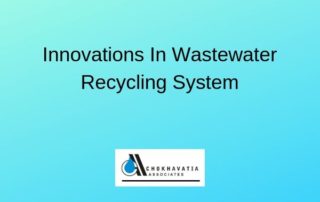Innovations In Wastewater Recycling system
Innovations In Wastewater Recycling System
70 percent of the world is seen blue from moon is what people say which means we have abundant water but what part in it can be used by the humans. Statistics says only 2.5% of the total available water is fresh and rest is either saline or ocean based. Water scarcity and Water pollution are threats making life’s sustainability tough and so an alternative has to be formulated to counter tackle the crisis. Wastewater recycling and purification through equipments like Clarifiers, Reverse Osmosis systems and Oil separators simplifies the process of treating million gallons of water every day.
Wastewater effluents that Needs to be Removed in Wastewater Recycling System
The metal impurities present in wastewater are the major effluents from industrial wastes. Most commonly found metal impurities in wastewater include chromium, lead, nickel, tin, cadmium. The dissolved solid impurities comprises of inorganic solids including bicarbonates, chlorides and sulphates of sodium, potassium and magnesium.
Compact Disk Wastewater Recycling System
Din Ping Tsai, a physicist at National Taiwan University, along with colleagues has made a water recycling system which utilizes the flat and smooth surface of a Compact disk. Based on study it is evident that CD’s are ideal in supporting zinc oxide nanorods which along with Ultraviolet light can act as a photocatalyst helping in separating impurities. When water is turned on it a thin water film is formed and reacts with the nanorods. This leads in creating a thin water film which effectively relates to the photocatalytic layer of the reactive nanorods made from zinc oxide. The zinc oxide helps in breaking down the organic pollutants in the wastewater.
Since compact disks are outdated, they get accumulated to the e-waste and this water recycling system will surely help to minimize the dumping of disks.
The CD wastewater recycling system consists of layers of zinc oxide coated CD, a Ultraviolet light source and a system that works to recirculate the wastewater to further break down the contamination. The research team conducted water recycling system test using an organic solution for one hour and found that about 95% of the contaminants had been broken down after 1 hour.
Pro’s
The spinning compact disk Wastewater Recycling System being small consumes very limited amount of power and has more efficiency rates when compared to other water treatment techniques. Since the overall recycling system is quite smaller in overall size, the system can be incorporated by small scale industries. Also the team is working upgrade this recycling system’s work efficiency by stacking up layers of compact disks in a single system.
Wastewater recycling needs to be taken up into serious consideration primarily by industrial units as industries are major causes for water pollution and the reason firms not taking up the water recycling phase is mainly due to costing and the area required to set up the treatment is large. If this compact disk wastewater recycling system can reach to be followed, it will surely be a technological revolution counter facing pollution.

